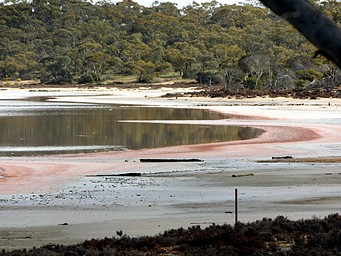Australia So Much to See
Copyright (C) 2013 AustraliaSoMuchtoSee.com. All reights reserved
Home > Where did we go and what did we see in 2017?
While we are on tour, Australia So Much to See will have only minimal updating. New travelogues and new articles will be added
after we return home. Watch for posts of where we are as we tour this great country of Australia.
Sometimes we find a perfect bush campsite, and have it all to ourselves. Where? Not telling, but I thought you would enjoy this photograph of such a pretty spot.
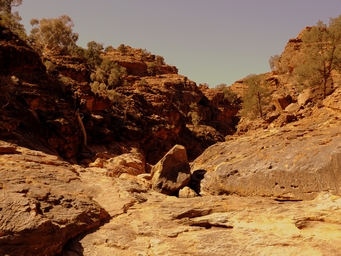
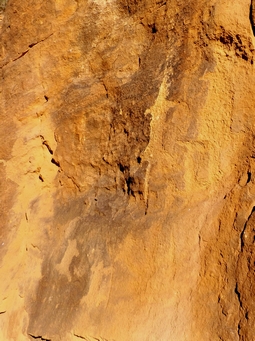
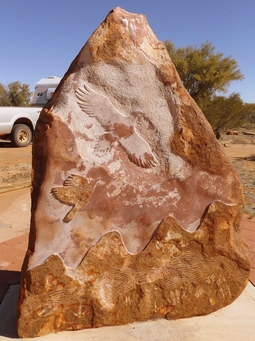
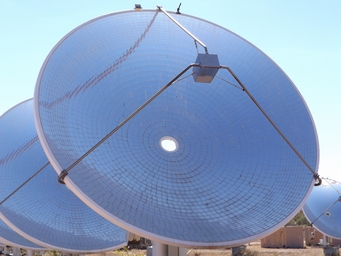
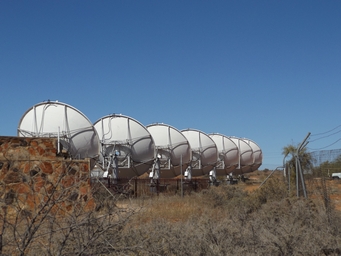
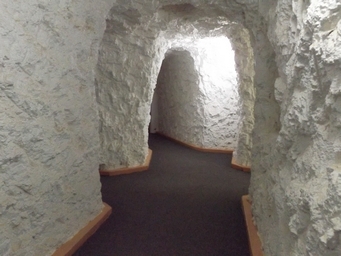
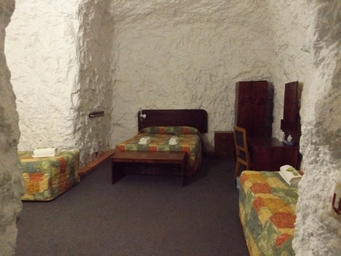
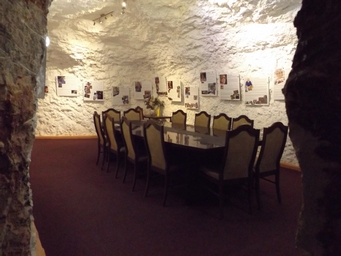
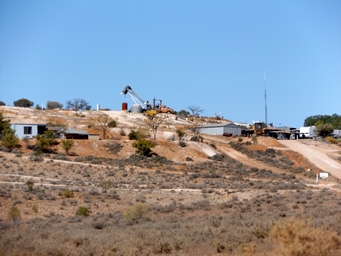
At the opal mning town of White Cliffs, this solar power plant (above) demonstrates early technology. The White Cliffs
disc power plant was a world first.
At left, Smith's Hill is one of two hills closed to town where mining and dwelling,
mostly underground, occur. It is here that we visited the amazing underground motel (below).
Temperatures remain
at around 22° year round in the underground rooms.
Above left is a conference room.
Above right a network of passages service the guest rooms.
At left one of
the guest bedrooms, with beds set into alcoves. The decor has been chosen to compliment the below ground theme.
At left is the reverse side of a beautiful rock carving by artist Badger Bates (at left), using the beautiful tones of the marble-like rock from Wilcannia, Badger's birthplace.
Badger has dedicated this art work to his Uncle, George Dutton, who handed down traditional stories.
This is the reverse side of the entry statement at Mutawintji National Park.
Badger has dedicated this art work to his Uncle, George Dutton, who handed down traditional stories.
This is the reverse side of the entry statement at Mutawintji National Park.
We took several walk trails while visiting Mutawintji National Park, and at left is nearing the head of gorge of the Old Mootwingee Creek.
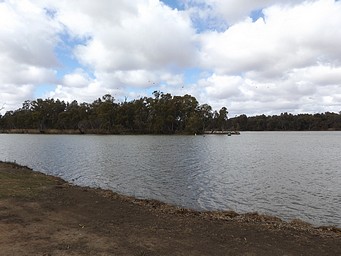
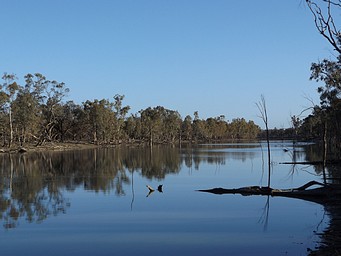
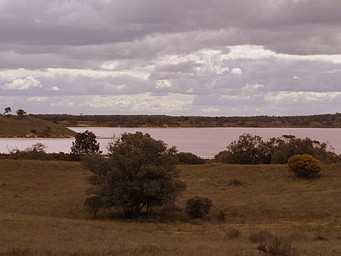
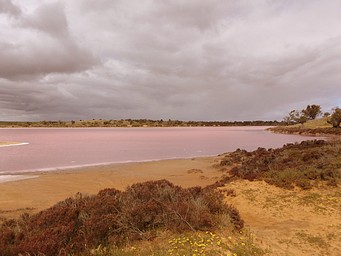
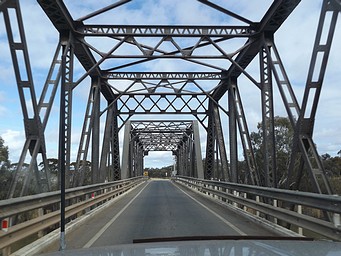
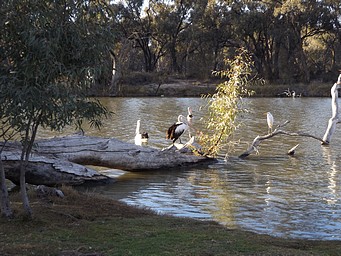
Reaching Wentworth, we re-visited the confluence of the Darling River (entering from left) and Murray River (entering from right). Water levels, except in times of flooding, are controlled by the Lock 10 Weir.
Birdlife on the Darling River at the Willowbank Caravan Park, Wentworth. The willows which lined the river on our previous visit have been removed for environmental reasons.
Crossing the Murray River via a single lane bridge (controlled by traffic lights), we leave New South Wales and enter Victoria.
Victoria
Statues in a Pioneer Park at Underbool on the Mallee Highway.
From Underbool, we visited the pink lakes of the Murray-Sunset National Park which, at 677,000 hectares, is the largest National Park in Victoria.
The pink Lake Hardy in the Murray-Sunset National Park (below left). Lake Hardy is the pinkest of this groups of salt lakes.
Lake Crosbie (below right) is the largest in this group of lakes. There is a campground on the southern edge of this lake.
From Underbool, we visited the pink lakes of the Murray-Sunset National Park which, at 677,000 hectares, is the largest National Park in Victoria.
The pink Lake Hardy in the Murray-Sunset National Park (below left). Lake Hardy is the pinkest of this groups of salt lakes.
Lake Crosbie (below right) is the largest in this group of lakes. There is a campground on the southern edge of this lake.
Although we visited early in September, these lakes which develop their rich colour during the heat of summer, were displaying pink tones.
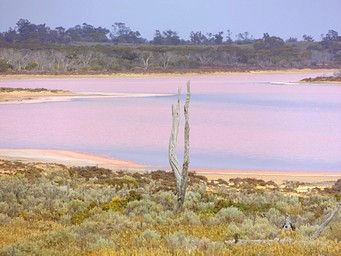
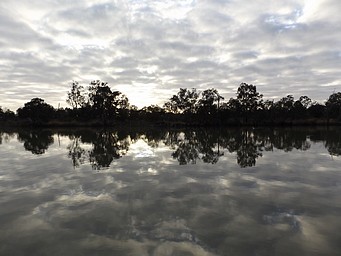
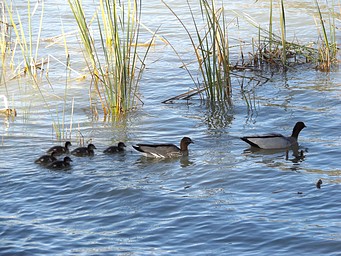
Another delightful spot to stay overnight, alongside the Murray River at Moorook.
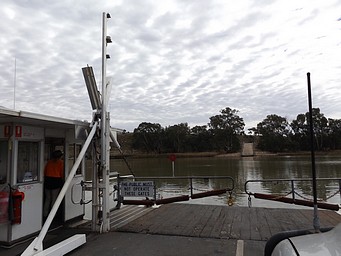
Following the Murray River, and filling in a section not previously followed, we completed having been along the river from Renmark to Mouth of Murray.
This time we crossed the river on the small ferry at Cadell, a ride we had to ourselves.
This time we crossed the river on the small ferry at Cadell, a ride we had to ourselves.
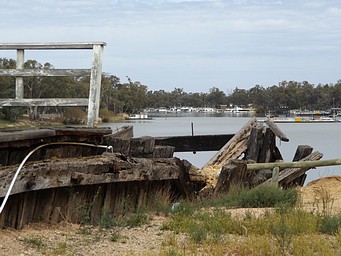
With an overall length of 168 metres, the Morgan Wharf was the largest on the South Australian section of the Murray River.
Built in three stages from 1877 to 1912, only the most recent section remains.
Built in three stages from 1877 to 1912, only the most recent section remains.
South Australia
